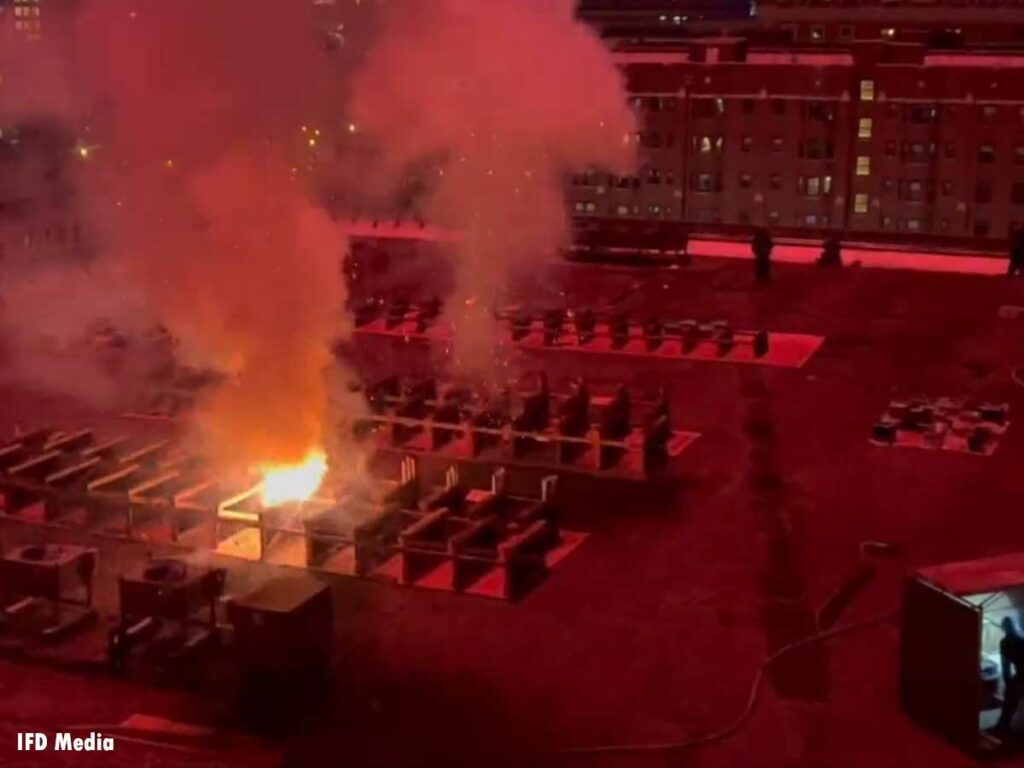Chief Kanterman’s Journal Entry 68

It’s fireworks season once again. Are you prepared? Is your fire marshal’s office or bureau of fire prevention on top of this? Review the following information to become somewhat familiar with fireworks, public displays, and related operations such as transportation, general precautions, and working with other agencies having jurisdiction. Hopefully, it will spark your interest (pun intended) and you will seek more information on fireworks. Fireworks are dangerous but with the proper precautions, supervision, and vigilance on the part of the fire department, injuries, and accidents can be minimized. Good luck.
TYPES OF FIREWORKS THAT CAUSE INJURIES (National Fire Protection Association (NFPA)):
9%: Illegal under federal law
5%: Large devices
1%: Homemade devices
85%: Legal under federal law
NOTE: Less than 6% of all injuries occur at legal permitted public displays
FIRE LOSSES FROM FIREWORKS (NFPA):
- Annual average fire losses/property damage is $30 million.
- Annual average number of fires from fireworks is 20-25,000.
Agencies Involved and Their Roles
Fire department: Permits and display safety
Police: Crowd control, routes of travel for fireworks truck, site security
Parks & Recreation: Permits, fencing/security, inspection (if at a public park)
Federal Aviation Administration: Grants permission to use the air space via a letter of permission
U.S. Coast Guard: Permits, waterway management
NFPA: NFPA 1123 (Public Displays), NFPA 1124 (Manufacturing), NFPA 1126 (Pyrotechnics Before a Proximate Audience)
Department of Transportation: Title 49CFR regulates transportation of hazardous materials. Placards and shipping containers.
Site Selection: Key Items to Remember from NFPA 1123
- Refer to NFPA 1123, Standard for Public Fireworks Displays.
- Refer to your local fire prevention code.
- You must have 70 feet of clearance to the audience for every inch of diameter of the largest shell (See NFPA Standard 1123, Table of Distances).
- Beware of extended racks-Your inspection will allow for certain size shells from the center of the firing site to the audience, but beware that mortar racks can extend for tens or hundreds of feet. Ensure that the shells at the end of the racks are the right size for the distance to the audience. Remember, distance if your friend!
- A site inspection must be performed by the fire official/authority having jurisdiction.
- Double your table of distances from storage of hazardous materials, correctional, and healthcare facilities.
Display Operations
- Consider escorting the fireworks truck with an engine company through town to the firing site in the event of an accident. Use the police to establish the route and assist with the escort. Consider charging a fee for the escort, career or volunteer.
- Establish a unified command with other agencies at the display site prior to the shot. Maintain command one hour after the shot as well.
- Police: Crowd control, site security, traffic control, egress, ingress, and access.
- Fire: Weather/wind/rain, fire department unit staging, members for firing line and monitoring of fallout areas and final clearance from the FAA, if necessary.
- EMS: Prepare for shot and post-shot injuries (burns for operators, eye injuries for spectators). Predetermine triage site, a stationary first-aid station, and mark accordingly.
Command units should be committed to the display and must remain out of service for the display.
People in the fireworks business use the phrase “Have a safe and sane Fourth (of July)” like most others use Happy New Year or Merry Christmas. John R. Hall Jr. of the NFPA was quoted in the 1997 July/August edition of NFPA Journal as saying: “Safe and sane fireworks are neither.” In any event, follow the rules and use your arsenal of common sense.
Be well, stay well, be safe,
Ronnie K
RON KANTERMAN is the executive inspector of the Bureau of Fire Prevention for the Fire Department of New York. He is a more than four-decade veteran of the fire service and recently retired as chief of the Wilton (CT) Fire Department. He has a B.A. degree in fire administration and two master’s degrees. He’s a contributing author for Fire Engineering, the Fire Engineering Handbook for Firefighter I and II, and the 7th edition of the Fire Chief’s Handbook.

